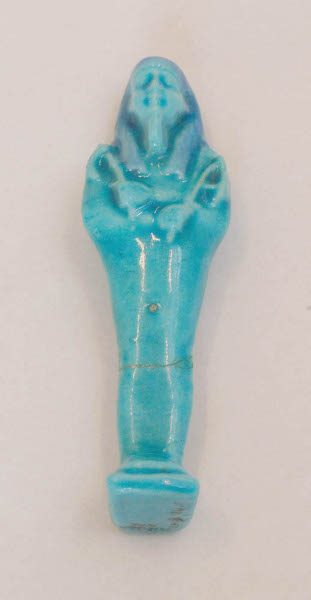Shabti
Turquoise glazed - Ancient Egyptian

Shabti
Shabtis were often placed in the tombs of the Ancient Egyptian dead. They were made from a variety of materials including stone, wood, pottery and even mud. Their meaning probably changed over time but they were both servants and substitutes for the dead person when any work was required in the afterlife.
It was believed that everyone had to help with agricultural duties such as ploughing, sowing and reaping crops in the afterlife. These statues, known as shabtis or ushabtis, meaning 'answerer', were thought to be able to undertake this work on behalf of the deceased.
Tutankhamun was provided with 413 shabtis – 365 workers, one for every day of the year; 36 overseers; and 12 extra monthly overseers.
Museum object number
See related topic: School Loans Collection